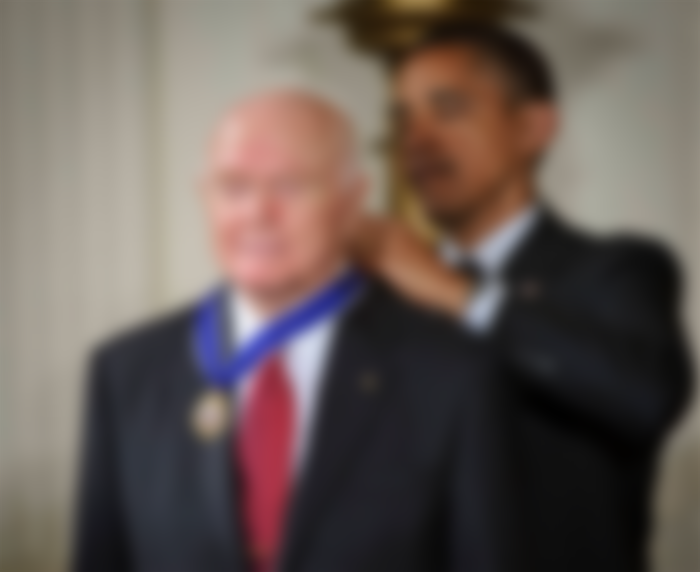On October 29, 1998, the oldest person in history was launched into space. It was about 77-year-old John Glenn, who had long been a famous American astronaut. Namely, in 1962, he first flew into space as part of the Mercury project. He was also the first American to make an orbital flight around the Earth, as well as the third American astronaut in space at all (only Alan Shepard and Gus Grissom were launched before him, but they did not perform full orbital flights around the Earth).

Glenn fell in love with flying at an early age, making airplane models while growing up in Ohio. In 1941, Glenn discovered a U.S. Department of Commerce program that sought out students for pilot training. Just six months after he got the permit, the Japanese bombed Pearl Harbor. Glenn initially enlisted in the U.S. Navy Cadet and Air Force and Air Cadet Program, but was eventually assigned to the U.S. Marine Corps. Glenn flew 59 missions in the South Pacific, where one of his winger was baseball legend Ted Williams. After serving in the Korean War, Glenn was appointed to the Naval Test Pilot Program, where he completed one of the world's first supersonic transcontinental flights in 1957. After this feat, Glenn received huge publicity, which attracted the attention of NASA, the predecessor of NASA.

John Glenn is generally one of the astronauts with the most successful career. In his youth he was a Marine and a war pilot (he shot down three enemy MiG-15 aircraft in the Korean War). He was chosen as one of the first seven American astronauts (the famous Mercury Seven). He became famous, especially after a successful space flight in 1962. As a member of the Democratic Party, he became a US senator. He was then nominated for the position of vice presidential candidate ahead of the 1976 US presidential election.

The said flight was performed by Glenn as many as 36 years after his first space flight, which is the longest time gap for any astronaut in history. The flight was performed by the Discovery space shuttle, and Glenn and the other six crew members spent nearly 9 days in space.
The official name of Glenn's mission was Mercury-Atlas 6. "Mercury" for the mission program itself (named after the Roman god of speed) and "Atlas 6" to indicate that this is the sixth mission to use the newer, faster Atlas rocket as a launch vehicle. As was common practice among most pilots, astronauts selected for the Mercury program often gave their capsules personal nicknames - Glenn asked his children for suggestions on how he should name the ship before finally deciding on the word "Friendship" and adding the number " 7 ”in honor of his fellow Mercury members.

Glenn’s mission was delayed several times, leading to concern and anxiety. Originally planned for December 1961 and then moved to January 13, problems with a new Atlas rocket that would serve as a space capsule launch platform led to a two-week delay. On January 27, with television crews already ready to broadcast both from the launch site and from Glenn’s house, where his wife Annie and his children watched anxiously, bad weather conditions forced another delay. Finally, with all the mechanical problems solved and good weather forecast, Glenn was moored in Friendship 7 again early in the morning of February 20, 1962.

The launch of Friendship 7 went flawlessly, and Glenn encountered several problems in the early stages of the flight. During its second orbit, the mission control noticed that the sensor issued a warning that the Friendship 7 heat shield and landing bag were unsafe, putting the mission and Glenn in danger. Officials did not immediately notify Glenn of the potential problem, but asked him to perform a series of small tests on the system to see if it solved the problem, which ultimately indicated Glenn’s concern. After a series of discussions, it was decided that instead of following standard retro-missile rejection procedures (an engine designed to slow the capsule on re-entry), Glenn would keep the rocket in place to provide a heat shield. It successfully re-entered the Earth's atmosphere and splashed into the Atlantic Ocean after a flight of 4 hours and 55 minutes. When officers inspected the capsule found, they determined that the heat shield was never in danger and that the problem was caused by a faulty sensor.

John Glenn remained at NASA until 1964, but did not return to space in any of Mercury's later missions. President Kennedy and other government officials, aware of the symbolic importance of the first American to orbit the Earth, are believed to have ordered NASA to keep him on the ground, for fear of being injured or killed in a space program that was still in ways, in the development phase. Glenn returned to Ohio, where he became a successful businessman. He later entered politics, and was elected to the U.S. Senate in 1974, serving four terms. Glenn maintained close contact with NASA, and he often spoke of his regret that he was not part of later missions, including landing on the moon.

However, in 1998, John Glenn's wish came true and he returned to space. Although it has been more than 35 years since he last trained, Glenn has been selected as part of the crew on the Discovery space shuttle. His participation, at the age of 77, would allow scientists to study the impact of space travel on the elderly. When Glenn returned from a nine-day mission, he and his fellow crew members were greeted at home with a parade with cassettes in New York City, the second time Glenn had received such an honor.

American space legend astronaut John Glenn has died at the age of 95.







